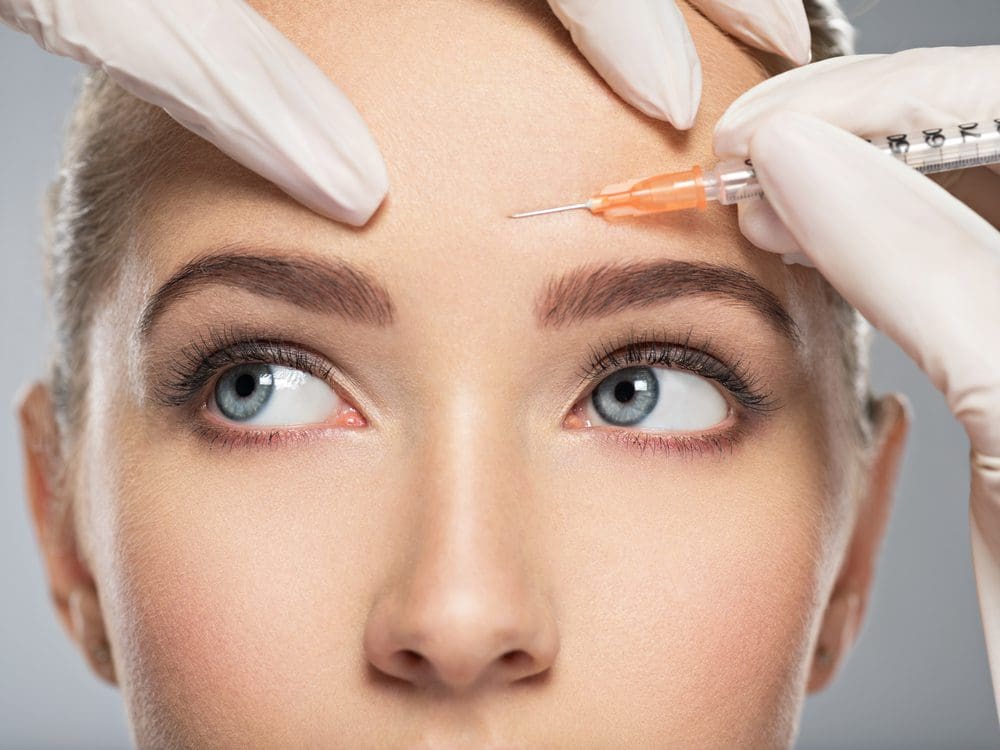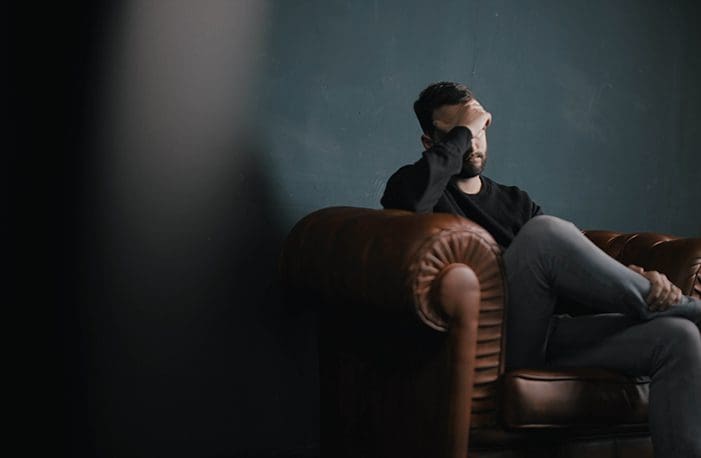Last Updated
Further Reading
- Types of Lenses For Cataract Surgery: Your Guide to IOLs
- Headache Caused By Eye Strain?
- Eye Refraction
- Can Dilated Pupils Be Dangerous?
- Remedies for Eye Bags
- Pearle Vision vs. LensCrafters
- Color Blindness Causes
- Stress & Vision
- 20/30 Vision
- 20/40 Vision
- Eczema Around the Eyes
- VR & Your Eyes
- Vision Issues in Pregnancy
- Lupus and Eyes
- Salaries for Optometrists
- Am I a Candidate for LASIK? Take our LASIK Candidate Quiz To Find Out!
- When to Get Cataract Surgery: Symptom Progression & Your Options
- How Long Does LASIK Take?
- The Different Types of Eye Doctor
- Learn & Compare Different Types of Vision Correction Procedures
- Different Types of Eye Care Professionals
- Becoming an Ophthalmologist:
- How Often Should You Get Your Eyes Checked?
- Microblading
- Is Eyebrow Tinting Safe?
- Crow's Feet
- Current State of US Eye Health
- How Do Blind People Experience Their Dreams?
- Childhood Bullying
- Eye Care Guide for Seniors
- Mental Health Effects of Vision Issues
- Vision Care Guide for Veterans
- Career Options for the Visually Impaired
- Driving With Visual Impairments
- Eye Damage From the Sun
- Guide to Bionic Eyes
- How to Test for Your Dominant Eye
- Eye Damage From Solar Eclipses
- Young Adults & Vision Loss
- Optic Nerve Cupping
- Light Sensitivity
- What Is Night Blindness?
- How Eye Patches Affect Your Good Eye
- Blindness From Staring at the Sun
- Types of Vision Tests
- What You Should Know About LATISSE
- Botox Around the Eyes
- Optometrists vs. Ophthalmologists
- Vision Loss & Driving
- Anatomy of the Eye
- Visual Disturbances
- Screen Time & Eyes
- Facts, Stats & Myths - Blue Light
- Jaundice of the Eyes
- Eczema on the Eyelids
- Drugs That Cause Dilated Pupils
- Cholesterol & Your Eyes
- Tea Bags for Eyes
- Eye Disease Statistics
- Brown Eyes vs. Hazel Eyes
- Aqueous & Vitreous Humor
- Prosthetic Eyes
- Guide to Enucleation
- Pros & Cons of Eye Colors
- Contrast Sensitivity Testing
Botox for Your Eyes: Safety, Costs & Success Rates
Home / Vision Education /
Last Updated
Botox is a safe treatment used in many medical and cosmetic applications to temporarily paralyze muscles. It can be used to treat the muscles around your eyes, depending on your eye condition.
Table of Contents
Conditions like blepharospasm, strabismus, drooping eyelids (ptosis), excessive eye watering (epiphora), and migraines can all benefit from routine Botox injections as one approach to treatment. Like any medical treatment, there are some risks and side effects associated with Botox injections, but these are rare.
Medical use of Botox will receive some insurance coverage, but cosmetic use will not be covered. Botox prices generally range from $10 to $15 per unit.
Botox can be a great approach to treat some conditions that impact your vision, but you should always discuss treatment options with your optometrist or ophthalmologist.

What Is Botox for Your Eyes?
Botox is famous as an injection, used as a cosmetic procedure to remove wrinkles and smooth skin. These injections come from the botulism toxin. This is produced from the same microbe that triggers botulism, a variety of food poisoning.
Medically produced Botox injections are used to temporarily paralyze muscles. They do not cause the same side effects as consuming the bacteria.
While you may know Botox as a product that makes skin look younger, there are several other uses for injections, including to:
- Relieve muscle spasms around the bladder or neck.
- Reduce the frequency of migraines for chronic migraine sufferers.
- Lessen sweating in those who struggle with hyperhidrosis.
- Treat chronic eye twitching.
- Address muscles responsible for amblyopia, or “lazy eye.”
There are some complications to using Botox injections to manage medical conditions that affect your vision, but if you work with an optometrist or ophthalmologist for an appropriate diagnosis and treatment plan, these procedures are safe and effective.
Eye Conditions That Benefit From Botox Treatments
Some conditions that affect your vision can be treated with Botox injections in muscles around the eye. The injections can alleviate discomfort and help the eye focus for clearer vision.
Conditions that benefit from Botox treatments include:
Blepharospasm (eye twitching)
Almost everyone experiences muscle spasms in the eyelids or around the eyes once in a while, but the condition blepharospasm is more painful and complicated than simple twinges. It involves abnormal contraction of the eyelid muscles, causing episodic closure that you cannot control. Blepharospasm occurs in both eyes as opposed to one eye.
Symptoms start as mild, occasional uncontrolled blinking or twitching, but they will progress over time to the point that the person is functionally blind because they are temporarily unable to open their eyes. Periodic injections of Botox help to stabilize the condition. These will wear off over several weeks and symptoms will return, so you will need to get Botox injections every three to four months. These injections require two to three days to become fully effective, and peak effects set in after about one week.
Strabismus (lazy eye)
This condition typically sets in early in childhood and is very treatable. Strabismus occurs when the eyes are not aligned properly, pointing in different directions, typically because the nondominant eye has a problem with the muscle that keeps it in place. This can cause the eye to turn inward, outward, or down. It can come and go, or the eye may be consistently misaligned. Because the muscle is weaker in one eye, the brain relies on the dominant eye to process images. The nondominant eye has a decreasing connection to the brain. About 4 percent of children in the United States have this condition. Strabismus treatment focuses on restoring binocular vision by aligning the nondominant eye with the dominant one.
Treatments include:
- Eyeglasses. Prescription eyewear can sometimes realign the eyes without any further treatment.
- Patching. Blocking the dominant eye with a patch or prism forces the nondominant eye to exercise the muscles and connect to the vision centers of the brain.
- Surgery. In more extreme cases, minor surgery is required to move the muscles around the eye, so they restore the eye to a forward position.
- Botox injections. This approach to strabismus treatment has been used since the 1970s. It is an effective method for realigning the eyes, but injections wear off after three to four months, so it may not be the most effective long-term treatment.
Ptosis (droopy eyelids)
This condition occurs when the upper eyelids begin to droop down over the eyes. Treatment only becomes necessary when eyelids fall so low that it impacts your vision. If eyelids droop far enough that your vision struggles, your ophthalmologist may recommend stimulating the muscles with the back of an electric toothbrush or using eyedrops. If these procedures do not work, you may benefit from periodic Botox injections to tighten the skin, or you may choose to undergo surgery to remove excess eyelid skin.
Ptosis can also be caused by Botox injections around the eyes, especially when performed by an inexperienced injector. Ophthalmologists report that the condition typically wears off in three to four weeks, as the peak effects of Botox under the skin wear off.
Epiphora (watery eyes)
Lacrimal gland problems like epiphora, excessive tear production that gets in the way of seeing clearly and spills over onto the face, can be treated with Botox injections. Other symptoms of this condition include:
- Eye redness.
- Enlarged blood vessels.
- Soreness.
- Sharp pain.
- Eyelid swelling.
- Blurry vision.
- Light sensitivity.
It is important to work with an optometrist or ophthalmologist to diagnose the underlying condition causing watery eyes and associated symptoms. Most people experience this problem due to an underlying issue like allergies or an infection. If these cause watery eyes, a Botox injection will not help.
If the underlying cause is a tear duct blockage or changes to the structure of the duct, clinical trials have shown that a Botox injection can relax the muscles and close the tear duct, so you do not experience excessive watering.
Migraines
These headaches have a range of symptoms, including sensitivity to light, flashing or bright flares in your vision, zig-zag lines, or pain in or around the eyes. There may be some symptoms leading up to the migraine, including changes in your vision along with changes in your mood and physical sensations.
If you get migraines more than 15 times per month, your doctor may recommend Botox injections to manage the symptoms. These injections can alleviate all uncomfortable symptoms, including vision changes and light sensitivity, for three to four months.

Effectiveness & Safety of Botox Treatments for Your Eyes
Botox injections can be effective for the eye conditions listed above, but it is a temporary solution. Working with an optometrist or ophthalmologist means you get a diagnosis and treatment plan for underlying conditions that may lead to blepharospasm, watery eyes, or migraines. A treatment plan includes long-term solutions to issues; however, you may find that Botox injections every three to four months are the best solution for you.
Risks and side effects from Botox include:
- Pain, swelling, and bruising around the injection site.
- Headaches or flu-like symptoms.
- Droopy eyelids.
- Misaligned eyebrows.
- Eye dryness.
- Excessive watering of the eyes.
If you experience these side effects, they should diminish in a few days. Persistent side effects indicate that you should speak with your eye doctor.
Severe side effects can occur in rare instances and require emergency medical attention. These include:
- Continuing or worsening vision problems.
- Muscle weakness that spreads or occurs outside the eyes.
- Trouble speaking or swallowing.
- Breathing problems.
- Loss of bladder control.
What Does Botox for Your Eyes Cost? Will Insurance Cover It?

Cosmetic use of Botox is not covered by insurance. Out-of-pocket costs for an experienced Botox practitioner will vary. It generally costs about $10 to $15 per unit, with around 20 units on average needed for a typical forehead smoothing treatment. This means the average range of Botox treatment for cosmetic reasons on the skin can be around $200 to $400.
Medical Botox injections are more likely to be covered by insurance. For example, Botox injections in young children with early onset esotropia (a form of strabismus where the eye turns inward) has been found at least as effective as surgery on the eye muscles. It is also much more cost effective, with the average charge for Botox injections being $874 per procedure before insurance compared to $2,783 for the surgery.
Your health or vision insurance will not cover nonmedical or off-label uses of Botox. Speak with your optometrist or ophthalmologist about potential costs and coverage if they recommend this procedure, or if you are interested in pursuing Botox injections to treat a vision problem. You may need preauthorization before you proceed with treatment.
Botox for Your Eyes Is One Treatment Among Several Options
Depending on the underlying vision problem, there may be other options to help your eyesight. Some conditions, like blepharospasm, benefit greatly from Botox treatments. Others, like drooping eyelids or excessively watering eyes, may not benefit as much.
Botox injections are often temporary, requiring a return visit after three to four months. Many people find this to be a cost-effective solution, but if you want a more permanent solution, work with your vision specialist or medical doctor to find other options that are right for you.
References
- Botox Injections. (February 2019). Mayo Clinic.
- Blepharospasm. (October 2019). EyeWiki, American Academy of Ophthalmology (AAO.org).
- What Is Strabismus? (April 2014). American Academy of Ophthalmology (AAO.org).
- Strabismus: Botox Treatment. (October 2015). American Academy of Ophthalmology (AAO.org).
- How Do You Treat Droopy Eyelid? (October 2018). Medical News Today.
- What Causes Watering Eyes (Epiphora)? (July 2018). Healthline.
- Botox for Migraine. (June 2017). American Migraine Foundation.
- Proper Dosage for Botox Treatment on the Forehead, Eyes, and Glabella. (May 2018). Healthline.com.
- Botulinum Injections Offer Cost-Effective Alternative for Acute-Onset Esotropia. (June 2017). American Academy of Ophthalmology (AAO).
- Seven Frequently Asked Questions About Medical Botox Injections. Healthgrades.
The information provided on this page should not be used in place of information provided by a doctor or specialist. To learn more, read our Privacy Policy and Editorial Policy pages.
Further Reading
- Types of Lenses For Cataract Surgery: Your Guide to IOLs
- Headache Caused By Eye Strain?
- Eye Refraction
- Can Dilated Pupils Be Dangerous?
- Remedies for Eye Bags
- Pearle Vision vs. LensCrafters
- Color Blindness Causes
- Stress & Vision
- 20/30 Vision
- 20/40 Vision
- Eczema Around the Eyes
- VR & Your Eyes
- Vision Issues in Pregnancy
- Lupus and Eyes
- Salaries for Optometrists
- Am I a Candidate for LASIK? Take our LASIK Candidate Quiz To Find Out!
- When to Get Cataract Surgery: Symptom Progression & Your Options
- How Long Does LASIK Take?
- The Different Types of Eye Doctor
- Learn & Compare Different Types of Vision Correction Procedures
- Different Types of Eye Care Professionals
- Becoming an Ophthalmologist:
- How Often Should You Get Your Eyes Checked?
- Microblading
- Is Eyebrow Tinting Safe?
- Crow's Feet
- Current State of US Eye Health
- How Do Blind People Experience Their Dreams?
- Childhood Bullying
- Eye Care Guide for Seniors
- Mental Health Effects of Vision Issues
- Vision Care Guide for Veterans
- Career Options for the Visually Impaired
- Driving With Visual Impairments
- Eye Damage From the Sun
- Guide to Bionic Eyes
- How to Test for Your Dominant Eye
- Eye Damage From Solar Eclipses
- Young Adults & Vision Loss
- Optic Nerve Cupping
- Light Sensitivity
- What Is Night Blindness?
- How Eye Patches Affect Your Good Eye
- Blindness From Staring at the Sun
- Types of Vision Tests
- What You Should Know About LATISSE
- Botox Around the Eyes
- Optometrists vs. Ophthalmologists
- Vision Loss & Driving
- Anatomy of the Eye
- Visual Disturbances
- Screen Time & Eyes
- Facts, Stats & Myths - Blue Light
- Jaundice of the Eyes
- Eczema on the Eyelids
- Drugs That Cause Dilated Pupils
- Cholesterol & Your Eyes
- Tea Bags for Eyes
- Eye Disease Statistics
- Brown Eyes vs. Hazel Eyes
- Aqueous & Vitreous Humor
- Prosthetic Eyes
- Guide to Enucleation
- Pros & Cons of Eye Colors
- Contrast Sensitivity Testing